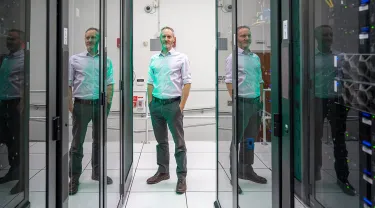Working closely together, a team of biologists and computer scientists from Tufts University and the University of Vermont (UVM) have made extraordinary advances in the field of biotechnology. First, they created Xenobots, tiny self-healing biological machines built from frog cells.
Then, they created a second generation: Like their predecessors, the newer Xenobots could work together in groups and heal themselves if damaged. They also could move faster, self-assemble a body from single cells, and record memories.
The goal is for the tiny organisms to carry out useful tasks in the environment or in therapeutic applications.
While the Tufts scientists involved in the project created the physical organisms—led by Michael Levin, Vannevar Bush Professor of Biology in the School of Arts and Sciences and director of the Allen Discovery Center at Tufts—scientists at UVM were busy running computer simulations that modeled different shapes of the Xenobot to see if they might exhibit different behaviors, both individually and in groups.
Using the DeepGreen supercomputer cluster at UVM's Vermont Advanced Computing Core, the team, led by computer scientists and robotics experts Josh Bongard and Sam Kriegman, simulated the Xenobots under hundreds of thousands of random environmental conditions using an evolutionary algorithm. These simulations were used to identify Xenobots most able to work together in swarms to gather large piles of debris in a field of particles.
“We know the task, but it’s not at all obvious—for people—what a successful design should look like,” said Bongard. “That’s where the supercomputer comes in. It searches over the space of all possible Xenobot swarms to find the swarm that does the job best.” To begin with, researchers gave the Xenobots simple tasks.
“But ultimately,” Bongard said, “we’re aiming for a new kind of living tool that could, for example, clean up microplastics in the ocean or contaminants in soil.”
He added that as the team builds bots with greater capabilities, they’ll use computer simulations to design them with more complex behaviors and the ability to carry out more elaborate tasks, such as those required by regenerative medicine. “We could potentially design them not only to report conditions in their environment,” he noted, “but also to modify and repair conditions in their environment.”
Pictured above: Josh Bongard (Photo courtesy of the University of Vermont)
